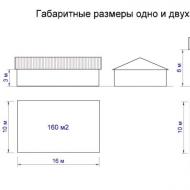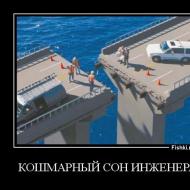
John George Merphy Technical Analysis of Futures Markets. Theory and practice. John J. Mamfithechnic Analysis of Futures Markets: Theory and Practice
Technical analysis futures markets:
Theory and practice
Preface
Why do you need another book on technical analysis of commodity futures markets? To answer this question, I will have to return a few years ago, by the time in the New York Finance Institute introduced a training course on this subject.
In the spring of 1981, the leadership of the Institute applied to me with a request to organize a course on the technical analysis of futures markets for listeners of this educational institution. By the time my shoulders were more than ten years of practical experience as a technical analyst, and I was repeatedly invited to lecture on this subject in various audiences. Nevertheless, the task of building fifteen weekly courses was, contrary to my expectations, quite complicated. At first I was sure that I would hardly be able to stretch the content of the course for such a long time. However, starting the selection of material deserving, in my opinion, inclusion in the program, I came to the conclusion that fifteen weeks are hardly enough for even in general features Light such a complex and bulk theme.
Technical analysis is something more than a simple set of highly specialized knowledge and techniques. It is a combination of several different approaches and areas of specialization, which, combined, form a single technical theory. Study of technical analysis must begin with acquaintance with more than ten different approaches, while it is necessary to clearly realize their relationship within one slender theory.
Having determined the range of issues that should be included in the program program, I began to search for a book that could be used as a textbook. However, having studied all the existing literature, I came to the conclusion that there is no such book. Of course, from among the books released at that time on this topic there were a lot of good and worthy of attention, but none of them fit for my goals. Those books in which the basics of technical analysis are fully covered, were intended for stock market, but I did not want to take a book on the analysis of securities for the "futures" course.
As for books on technical analysis of futures markets, they could be divided into several categories. Almost all of them were designed for an audience, already familiar with the basics of graph analyzing. Their authors represented their new developments and the results of original research. Similar literature could hardly come in handy by those who are just starting familiarizing with the subject. The books of another group were devoted to some one section of the technical theory, for example, analysis of column or digital graphs, elliot wave theory or cycles analysis and did not suit me because of its narrow specialization. In the books of the Third Group, the problems of using computer technologies and the development of new systems and indicators were considered. Despite the obvious advantages of all these books, none of them came to the role of a textbook for the technical analysis course, as it was either very difficult for a beginner, or too narrowly specialized.
In the end, I suddenly realized that the book I am looking for my course, a solid textbook, in which in a logical, consistent manner would be covered by all the most important directions of technical analysis in relation to futures markets and which, at the same time, would be available For an unprepared reader, simply does not exist. It became clear to me that there is a space in the literature on this topic. Since, like any technical analyst, I know that the gaps must be filled, I did the conclusion that if I need a similar book, I will have to write it yourself.
The book "Technical Analysis of Futures Markets" was not planned as an exhaustive, comprehensive work on technical analysis. There is no such book and will never. The technical analysis is very wide and multifaceted, there are as many subtleties and different currents in it that any attempt to write a "exhaustive" book would not only be arrogant, but would have initially been doomed to failure. There are separate works on almost every topic, affected in this book.
At the same time, this book is not a simple textbook for beginners. The first chapters are devoted to a detailed study of the foundations of technical theory. This is due, in part, and so that, in my deep conviction, the effectiveness of technical analysis is determined primarily by the ability to correctly use these basics. Most of the complex systems and indicators used today are nothing but the continuation and development of the simplest concepts and principles. Having mastered the analysis of graphs analysis, the reader will be able to proceed to the consideration of more complex methods and tools set out in subsequent chapters. The book is built in such a way as not to cause difficulties in perception from a relatively unprepared reader. At the same time, most of the material will be useful and those who already have a certain experience in this area and have worked for more than one year on the futures market. Professional technical analysts will be able to use this book to repeat the provisions already known to them and the principles of technical theory.
John J. Murphy
Technical analysis of futures markets: theory and practice
Technical Analysis.
Of The Futures.
A Comprehensive Guide.
tO TRADING METHODS AND APPLICATIONS
Preface
Why do you need another book on technical analysis of commodity futures markets? To answer this question, I will have to return a few years ago, by the time in the New York Finance Institute introduced a training course on this subject.
In the spring of 1981, the leadership of the Institute applied to me with a request to organize a course on the technical analysis of futures markets for listeners of this educational institution. By the time my shoulders were more than ten years of practical experience as a technical analyst, and I was repeatedly invited to lecture on this subject in various audiences. Nevertheless, the task of building a fifteen-week course was, contrary to my expectations, quite complicated. At first I was sure that I would hardly be able to stretch the content of the course for such a long time. However, starting the selection of material deserving, in my opinion, inclusion in the program, I came to the conclusion that fifteen weeks are hardly enough for even in general terms to highlight such a complex and bulk theme.
Technical analysis is something more than a simple set of highly specialized knowledge and techniques. It is a combination of several different approaches and areas of specialization, which, combined, form a single technical theory. Study of technical analysis must begin with acquaintance with more than ten different approaches, while it is necessary to clearly realize their relationship within one slender theory.
Having determined the range of issues that should be included in the program program, I began to search for a book that could be used as a textbook. However, having studied all the existing literature, I came to the conclusion that there is no such book. Of course, from among the books released at that time on this topic there were a lot of good and worthy of attention, but none of them fit for my goals. Those books in which the fundamentals of technical analysis are quite full, were intended for the stock market, but I did not want to take a book on the analysis of securities as the basis of the "futures" course.
As for books on technical analysis of futures markets, they could be divided into several categories. Almost all of them were designed for an audience, already familiar with the basics of graph analyzing. Their authors represented their new developments and the results of original research. Similar literature could hardly come in handy by those who are just starting familiarizing with the subject. The books of another group were devoted to some one section of the technical theory, such as analytization of column or digital graphs, the theory of Elliott waves or cycles, and did not suit me because of its narrow specialization. In the books of the Third Group, the problems of using computer technologies and the development of new systems and indicators were considered. Despite the obvious advantages of all these books, none of them approached the role of a textbook for a course on technical analysis, as it was either very difficult for a novice, or too narrowly specialized.
In the end, I suddenly realized that the book I am looking for my course, a solid textbook, in which in a logical, consistent manner would be covered by all the most important directions of technical analysis in relation to futures markets and which at the same time would be available for unprepared The reader simply does not exist. It became clear to me that there is a space in the literature on this topic. Since, like any technical analyst, I know that the gaps must be filled, I did the conclusion that if I need a similar book, I will have to write it yourself.
The book "Technical Analysis of Futures Markets" was not planned as an exhaustive, comprehensive work on technical analysis. There is no such book and will never. The technical analysis is very wide and multifaceted, there are as many subtleties and different currents in it that any attempt to write a "exhaustive" book would not only be arrogant, but would have initially been doomed to failure. There are separate works on almost every topic, affected in this book.
At the same time, this book is not a simple textbook for beginners. The first chapters are devoted to a detailed study of the foundations of technical theory. This is partly due to the fact that, in my deep conviction, the effectiveness of technical analysis is determined primarily by the ability to correctly use these basics. Most of the complex systems and indicators used today are nothing but the continuation and development of the simplest concepts and principles. Having mastered the analysis of graphs analysis, the reader will be able to proceed to the consideration of more complex methods and tools set out in subsequent chapters. The book is built in such a way as not to cause difficulties in perception from a relatively unprepared reader. At the same time, most of the material will be useful and those who already have a certain experience in this area and has worked for more than one year on the futures market. Professional technical analysts will be able to use this book to repeat the provisions already known to them and the principles of technical theory.
The last statement is especially important, because, as you know, the repetition is the mother of teachings. One of the greatest traders of his time and the founder of one of the directions of Technical analysis of W. Gunn once said: "I studied and improved my methods every year over the past forty years. Nevertheless, I'm still learning and hope to make more significant discoveries in the future. " ("Profitful operations in commodity markets", 1976, p. 2.)
The importance of constant expansion of knowledge and repetition of the previously studied material is difficult to overestimate. By teaching technical analysis, I constantly returned to the literature already read by me a few years ago. As an analyst-practitioner, I only won from this: each new reading opened some new subtleties and parts for me, previously left unnoticed. I am very amused when some novice technical analyst in six months of practical activity declares me that he has already mastered the foundations and would like to do something "more serious." Maybe I just envy such people. Despite more than fifteen years of experience, I'm still trying to master these basics.
Chapter 1 discloses the philosophical base of technical analysis of futures markets, as well as its main postulates. In my opinion, many misconceptions concerning technical analysis are primarily due to the lack of a clear understanding of what is a technical theory, and the ignorance of philosophical roots underlying it. Next, technical and fundamental methods for predicting market dynamics are compared and some advantages of the technical approach are specified. Attention is also paid to some similarities and differences in the use of technical analysis on stock and futures markets, since questions on this topic arise quite often. The views of two groups of technical analysis opponents are briefly considered: adherents of the theory of "random events" and "self-fulfilling prophecy".
Chapter 2 is devoted to the famous Dow Theory, which began the beginning of the development of most directions of technical theory. Many technical analysts of futures markets are not suspected of how much of what they are in their work today are based on the principles set out by Charles Dow at the end of the XIX century.
Chapter 3 describes how the daytime chart is being built, the most common type of graphs, and the concepts of trade and open interest are introduced. The features of the construction of weekly and monthly charts are also considered, which are a necessary addition to the daily.
Chapter 4, devoted to the tendency and its main characteristics, reveal basic concepts, or "bricks", graphic analysis, such as support and resistance, trend lines and price channels, the percentage of correction lengths, gaps and the days of the key fracture.
In chapters 5 and 6, with the help of the previously known to the reader, price models are being studied on the previous chapter. The main models of the stance of trends, such as the "head and shoulders", the double top and the base are considered in the fifth chapter. Models continueing the trend, including "flags", "Vimpels" and "Triangles" - in the sixth. The text is accompanied by plenty of illustrations. Much attention is paid to methods for measuring price models in order to identify price guidelines, as well as the role of trade in the formation and completion of models.
Technical Analysis of The Futures Markets:
A Comprehensive Guide to Trading Methods and Applications
New York Institute of Finance A Prentice Hall Company
John J. Murphy
Technical analysis of futures markets:
Theory and practice
Moscow Falcon 1996.
Translation from English: Novitskaya O., Sidorov V.
Scientific editor Candidate of Economic Sciences Samotev I.
John J. Murphy
Technical analysis of futures markets: theory and practice. - M.: Sokol, 1996. - 592c.
In this book, the theoretical foundations of technical analysis and methods for its practical application are also considered in detail in the affordable form. The author leading a world-famous technical analysis specialist convincingly proves the need to use technical methods for predicting price and successful financial operations.
The book is a basic manual for technical analysis not only futures, as well as shares and other financial instruments. It is rightly considered the "Bible of Technical Analysis".
The book is designed for both novice players and experienced specialists of the exchange and over-the-counter markets.
"Technical analysis of futures markets" "translated into eleven languages \u200b\u200bwas published in many countries and for the first time enters Russian.
Copyright © 1986 by Prentice Hall Au Rights Reserved
Preface 8.
Chapter 1. Technical Analysis Philosophy 13
Entry 13.
Philosophical basis of technical analysis 13
Comparison of technical and fundamental forecasting 15
Type of analysis and timing 17
Flexibility and adaptation capacity of technical analysis 17
Technical analysis in relation to various means of trading 18
Technical analysis for various time segments 18
Economic forecasting 20.
Technical analyst or graphic? 21.
A brief comparison of technical analysis on the stock and futures markets 22
Criticism of technical analysis 25
The theory of "random events" 28
Conclusion 30.
Chapter 2. Dow 31 Theory
Entry 31.
Basic provisions 32.
Use of closing prices and the presence of lines 37
Criticism of the theory of DOU 37
Conclusions 38.
Conclusion 38.
Chapter 3. Building charts 40
Entry 40.
Types of charts 40.
Arithmetic and logarithmic scales 44
Building day column graphics: price, volume and open interest 45
Volume and open interest 46
How to apply data on the volume and open interest on grain contracts 50
What schedule is better - ready or homemade? fifty
Weekly and monthly column graphics 51
Conclusion 53.
Chapter 4. Trend and its main characteristics 55
Determination of the trend 55.
The trend has three directions 56
Three types of trends 57
Support and resistance 59
Tren Yes 67
Faurest principle 74.
The importance of the number 3 75
Relative steepness trend line 76
Channel line 79.
Percentage Retracements (Percentage Retracements) 83
High-speed resistance lines 85
Framer Day 88.
Price gaps 92.
Conclusions 96.
Chapter 5. Basic Strots Models 97
Entry 97.
Price models 97.
Two types of models: fracture models and continued trends 97
Model of fracture "Head and shoulders" 100
Value of trade 103
Determination of price guidelines 103
Inverted model "Head and shoulders" 105
Complex models "Head and shoulders" 107
Tactic 108.
Failed model "Head and shoulders" 108
"Head and shoulders" as a consolidation model 109
Triple peak and triple base 109
Double Top and Double Base 111
Deviations from ideal models 114
"Soccer" or rounded vertices and base models 118
Book author:
Section:,
Book book:Original language:
Translator (s): ,
Publisher:
City of publication: Moscow
The year of publishing:
ISBN: 978-5-9614-1537-7
The size: 17 MB
Attention! You download the excerpt of the book allowed by the legislation and the copyright holder (no more than 20% of the text).
After reading the passage, you will be prompted to go to the right holder website and purchase the full version of the work.
Description of business book:
"Technical analysis of futures markets" is a classic of literature for traders. The book is translated into eleven languages, withstood many reprints and for more than a decade of years is the most popular basic manual for technical analysis not only futures, but also shares and other financial instruments.
In this edition, in detail and in an affordable form are considered theoretical basis Technical analysis and methods of its practical application. The author leading a world-famous technical analysis specialist convincingly proves the need to use technical methods for predicting price and successful financial operations.
The book is focused on traders, analysts, as well as private and professional investors.
Right holders!
The presented fragment of the book is placed in coordination with the distributor of legal content Ltres LLC (no more than 20% of the source text). If you think that the placement of the material violates your or anyone rights, then.
Current page: 1 (In total, 44 pages) [Available excerpt for reading: 11 pages]
John J. Murphy
Technical analysis of futures markets: theory and practice
Technical Analysis.
Of The Futures.
A Comprehensive Guide.
tO TRADING METHODS AND APPLICATIONS
Preface
Why do you need another book on technical analysis of commodity futures markets? To answer this question, I will have to return a few years ago, by the time in the New York Finance Institute introduced a training course on this subject.
In the spring of 1981, the leadership of the Institute applied to me with a request to organize a course on the technical analysis of futures markets for listeners of this educational institution. By the time my shoulders were more than ten years of practical experience as a technical analyst, and I was repeatedly invited to lecture on this subject in various audiences. Nevertheless, the task of building a fifteen-week course was, contrary to my expectations, quite complicated. At first I was sure that I would hardly be able to stretch the content of the course for such a long time. However, starting the selection of material deserving, in my opinion, inclusion in the program, I came to the conclusion that fifteen weeks are hardly enough for even in general terms to highlight such a complex and bulk theme.
Technical analysis is something more than a simple set of highly specialized knowledge and techniques. It is a combination of several different approaches and areas of specialization, which, combined, form a single technical theory. Study of technical analysis must begin with acquaintance with more than ten different approaches, while it is necessary to clearly realize their relationship within one slender theory.
Having determined the range of issues that should be included in the program program, I began to search for a book that could be used as a textbook. However, having studied all the existing literature, I came to the conclusion that there is no such book. Of course, from among the books released at that time on this topic there were a lot of good and worthy of attention, but none of them fit for my goals. Those books in which the fundamentals of technical analysis are quite full, were intended for the stock market, but I did not want to take a book on the analysis of securities as the basis of the "futures" course.
As for books on technical analysis of futures markets, they could be divided into several categories. Almost all of them were designed for an audience, already familiar with the basics of graph analyzing. Their authors represented their new developments and the results of original research. Similar literature could hardly come in handy by those who are just starting familiarizing with the subject. The books of another group were devoted to some one section of the technical theory, such as analytization of column or digital graphs, the theory of Elliott waves or cycles, and did not suit me because of its narrow specialization. In the books of the Third Group, the problems of using computer technologies and the development of new systems and indicators were considered. Despite the obvious advantages of all these books, none of them approached the role of a textbook for a course on technical analysis, as it was either very difficult for a novice, or too narrowly specialized.
In the end, I suddenly realized that the book I am looking for my course, a solid textbook, in which in a logical, consistent manner would be covered by all the most important directions of technical analysis in relation to futures markets and which at the same time would be available for unprepared The reader simply does not exist. It became clear to me that there is a space in the literature on this topic. Since, like any technical analyst, I know that the gaps must be filled, I did the conclusion that if I need a similar book, I will have to write it yourself.
The book "Technical Analysis of Futures Markets" was not planned as an exhaustive, comprehensive work on technical analysis. There is no such book and will never. The technical analysis is very wide and multifaceted, there are as many subtleties and different currents in it that any attempt to write a "exhaustive" book would not only be arrogant, but would have initially been doomed to failure. There are separate works on almost every topic, affected in this book.
At the same time, this book is not a simple textbook for beginners. The first chapters are devoted to a detailed study of the foundations of technical theory. This is partly due to the fact that, in my deep conviction, the effectiveness of technical analysis is determined primarily by the ability to correctly use these basics. Most of the complex systems and indicators used today are nothing but the continuation and development of the simplest concepts and principles. Having mastered the analysis of graphs analysis, the reader will be able to proceed to the consideration of more complex methods and tools set out in subsequent chapters. The book is built in such a way as not to cause difficulties in perception from a relatively unprepared reader. At the same time, most of the material will be useful and those who already have a certain experience in this area and has worked for more than one year on the futures market. Professional technical analysts will be able to use this book to repeat the provisions already known to them and the principles of technical theory.
The last statement is especially important, because, as you know, the repetition is the mother of teachings. One of the greatest traders of his time and the founder of one of the directions of Technical analysis of W. Gunn once said: "I studied and improved my methods every year over the past forty years. Nevertheless, I'm still learning and hope to make more significant discoveries in the future. " ("Profitful operations in commodity markets", 1976, p. 2.)
The importance of constant expansion of knowledge and repetition of the previously studied material is difficult to overestimate. By teaching technical analysis, I constantly returned to the literature already read by me a few years ago. As an analyst-practitioner, I only won from this: each new reading opened some new subtleties and parts for me, previously left unnoticed. I am very amused when some novice technical analyst in six months of practical activity declares me that he has already mastered the foundations and would like to do something "more serious." Maybe I just envy such people. Despite more than fifteen years of experience, I'm still trying to master these basics.
Chapter 1 discloses the philosophical base of technical analysis of futures markets, as well as its main postulates. In my opinion, many misconceptions concerning technical analysis are primarily due to the lack of a clear understanding of what is a technical theory, and the ignorance of philosophical roots underlying it. Next, technical and fundamental methods for predicting market dynamics are compared and some advantages of the technical approach are specified. Attention is also paid to some similarities and differences in the use of technical analysis on stock and futures markets, since questions on this topic arise quite often. The views of two groups of technical analysis opponents are briefly considered: adherents of the theory of "random events" and "self-fulfilling prophecy".
Chapter 2 is devoted to the famous Dow Theory, which began the beginning of the development of most directions of technical theory. Many technical analysts of futures markets are not suspected of how much of what they are in their work today are based on the principles set out by Charles Dow at the end of the XIX century.
Chapter 3 describes how the daytime chart is being built, the most common type of graphs, and the concepts of trade and open interest are introduced. The features of the construction of weekly and monthly charts are also considered, which are a necessary addition to the daily.
Chapter 4, devoted to the tendency and its main characteristics, reveal basic concepts, or "bricks", graphic analysis, such as support and resistance, trend lines and price channels, the percentage of correction lengths, gaps and the days of the key fracture.
In chapters 5 and 6, with the help of the previously known to the reader, price models are being studied on the previous chapter. The main models of the stance of trends, such as the "head and shoulders", the double top and the base are considered in the fifth chapter. Models continueing the trend, including "flags", "Vimpels" and "Triangles" - in the sixth. The text is accompanied by plenty of illustrations. Much attention is paid to methods for measuring price models in order to identify price guidelines, as well as the role of trade in the formation and completion of models.
Chapter 7 lighted in more detail the concepts of volume and open interest. It is shown how changes in these indicators can confirm the movement of prices or serve as a prevention of a possible turning trend. Some trade-based indicators are considered, such as Balance Volume (OBV), the accumulation of volume (VA), etc. Also emphasizes the importance of using open interest indicators contained in the "report on the commitments of traders".
Chapter 8 is devoted to an important area of \u200b\u200bgraphic analysis - the use of weekly and monthly schedules of long-term development, which are often not paid enough attention. Long-term graphics give a clearer view of the overall trend of market development than daylight. In addition, the need to track the indicators of generalized indexes of commodity markets, such as the futures price index of commodity markets (CRB) and indexes different groups markets.
Chapter 9 discusses the moving average, one of the most famous and widespread technical instruments, the basis of most of the computerized technical systems following the trend.
This chapter also presents another method of following the trend - weekly price channel, or "Rule of four weeks".
Chapter 10 describes the various types of oscillators and how they are determined by the state of overboughtness and oversold of the market and discrepancies. Attention is paid to another way to determine the critical states of the market - the method "from the opposite".
Chapter 11 Introduces the reader into the world of items of digital graphs. Despite smaller fame, this type of graphs allows you to more accurately analyze the dynamics of prices and is a valuable addition to column graphics.
Chapter 12 shows how to maintain some advantages of the data-digital data presentation method in the absence of information on intraday prices. The method of three-cell reversal and methods for optimizing items of digital graphs are considered. It seems that due to the widespread use of computers and the appearance of increasingly advanced price information systems, it is gradually returning to themselves by the friendly popularity among the analysts of futures markets.
Chapter 13 illuminates the theory of Elliott waves and the numerical sequence of Fibonacci. This theory originally used to analyze stock indexes in last years It began to attract increased attention of specialists working in futures markets. The principles of Elliott are a unique approach to studying the dynamics of the market and, with proper use, allow analyst to predict future changes in trends with greater degree of confidence and reliability.
Chapter 14 introduces a reader with the theory of cycles, thereby adding a new one - the aspect in the market forecasting process. Here also consider annual seasonal price movement models. In addition to general Review The basic principles of cyclic analysis discusses the problem of improving the efficiency of other technical instruments, such as medium sliding and oscillators, by synchronizing them with dominant market cycles.
Chapter 15 gives tribute to the role of computers in recent years in the market technical analysis and stock game. This chapter provides some advantages and disadvantages of using mechanical computer. trade systems And some features are considered computer Program According to the technical analysis created by the company "Commotek". Nevertheless, it is constantly emphasized that the computer is just a tool that is not able to replace the analysis itself, competent and weighted. If the user does not own the methods described in Chapters 1-14, you should not hope for the help of a computer. The computer can make a good technical analytics even better, and it may even harm.
Chapter 16 details another aspect of successful futures trading, which, unfortunately, is very often neglected, - Capital Management. The basic principles of effective capital management are revealed and explained why they are so necessary for survival in futures markets. Many traders believe that it is the ability to properly dispose of their own funds is the most important aspect of futures trading. This chapter shows the relationship between the three elements of the trading program: predicting, tactics and capital management. Forecasting helps the trader to decide which side he should enter the market - long or short. The trading tactic is to choose the specific moment of entry into the market and exit from it. The principles of fund management allow you to determine what amount should be inserted into the transaction. In addition, various types of exchange orders are discussed and the question of whether they need to use protective stop orders as an element of a trading strategy.
In the "Systematization of Analytical Methods" section, the variety of technical methods and tools discussed in previous chapters is presented in the form of a single slender theory. It is emphasized by the need to know all the directions of technical analysis and the ability to combine them in their work. Many technical analysts specialize in some kind of analysis area, believing that it is the key to success. I firmly believe that no separate area of \u200b\u200btechnical analysis can give answers to all questions, each of them contains only a response part to the analyst you are interested in. The more methods and tools use the trader, the greater the likelihood that he will be able to make the right decision. He will help him in this list of technical procedures in matters submitted in the section.
Despite the fact that this book is designed primarily for those who do or plans to engage in directly futures contractsThe principles of technical analysis set forth in it can also be applied in trade in spreads and options. Some features of the use of a technical approach in these two most important areas stock trading Briefly discussed in applications 1 and 2. And finally, no book on technical analysis can be considered complete without mentioning the legendary U. Ganne. Not able to stay in detail on the provisions of his teaching within this book, we will talk about several of his simplest and, according to some specialists, effective tools in Appendix 3.
The technical analysis is not at all "fortune-money on the coffee grounds", such comparisons can only be heard from people in disrepair. But at the same time, it should not be considered a magic wand guaranteeing instantaneous enrichment. Technical analysis is just one of the approaches to the forecasting of the market movement, based on the study of past, human psychology and probability theory. Of course, it is not flawless. Nevertheless, in most cases, predictions based on it differ quite high degree of accuracy. Technical analysis passed a test of time in the real world of exchange trading and fully deserves the attention of those who seriously study the behavior of the market.
The main topic of this book is simplicity. I have always been an opponent of excessive complication of technical analysis methods. Having tried most of the existing technical instruments, from the simplest to very sophisticated, for many years of work, I came to the conclusion that simpler techniques most often turn out to be the most effective. Therefore, my advice to you: strive for simplicity.
John J. Murphy
Chapter 1 Technical Analysis Philosophy
Introduction
Before studying the study of methods and means used for technical analysis of commodity futures markets, it is necessary first of all to determine what, in fact, is a technical analysis. In addition, it should be discharged on his philosophical basis, to conduct clear distinctions between technical and fundamental analysis and, finally, to mention critical comments that are often subject to technical analysis.
So, proceed to the definition. Technical analysis is a study of market dynamics, most often through graphs, in order to predict the future direction of price movement. The term "market dynamics" includes three main sources of information at the disposal of a technical analyst, namely, the price, volume and open interest. In our opinion, the term "price dynamics", which is often used, too narrow, as most technical analysts of futures markets use volume and open interest to their forecasts, and not just prices. But, despite the specified differences, it should be borne in mind that in the context of this book, the terms "market dynamics" and "price dynamics" will be used as synonyms.
Philosophical basis of technical analysis
So, we formulate three postulates, on which, as on three whales, there is a technical analysis:
1) the market takes into account everything;
2) the price movement is subject to trends;
3) The story is repeated.
The market takes into account everythingThis statement is essentially the cornerstone of all technical analysis. As long as the reader does not comprehend the whole essence and the whole meaning of this postulate, we make no sense to move on. The technical analyst believes that the reasons that at least somehow affect market value Futures Commercial Contract (and these reasons may be the most diverse properties: economic, political, psychological - any), will certainly be reflected in the price of this product. It follows from this that everything that is required of you is to carefully examine the price movement. It may seem that it sounds unnecessarily biased, but if you think about the true meaning of these words, you will understand that it is impossible to refute them.
So, in other words, any changes in the dynamics of supply and demand are reflected on the price movement. If demand exceeds the offer, prices increase. If the offer exceeds demand, prices go down. This, in fact, underlies any economic forecasting. And the technical analyst approaches the problem from the other end and argues as follows: if for any reason the reasons for the market prices went up, it means that the demand exceeds the offer. Consequently, in macroeconomic indicators The market is beneficial for bulls. If prices fall, the market is beneficial for bears. If suddenly you confuse the word "macroeconomics", which suddenly arose in our conversation about technical analysis, then it is completely in vain. Surprise here completely. After all, let it indirectly, but the technical analyst is somehow closed with fundamental analysis. Many technical experts will agree that it is the deep mechanisms for supply and demand, the economic nature of one or another commodity market and determine the dynamics to increase or lower prices. The graphs themselves do not have the slightest influence on their market. They only reflect psychological, if you like, the tendency to increase or decrease, which at the moment mastering the market.
As a rule, schedules analysis specialists prefer not to go into deep reasons that led to growth or fall in prices. Very often in the early stages, when the trend towards price changes only outlined, or, on the contrary, at some turning moments the cause of such changes may not be known to anyone. It may seem that the technical approach excessively simplifies and coats the task, but the logic that is behind the first initial postulate is "the market takes into account everything" - it becomes the more obvious the more experience in real work on the market acquires a technical analyst.
It follows from this that all that in any way affects the market price, without fail at this very price it will affect. Consequently, it is only necessary to track and study the dynamics of prices. Analyzing price charts and many additional indicators, the technical analyst seeks the fact that the market itself indicates the most likely direction of its development. We do not need to try to replay or overcome the market. All methods and techniques that will we are talking In this book, serve only in order to help a specialist in the process of studying the market dynamics. The technical analyst knows that for some reason the market goes up or down. But it is hardly known to know what causes it is necessary for its forecasts.
















